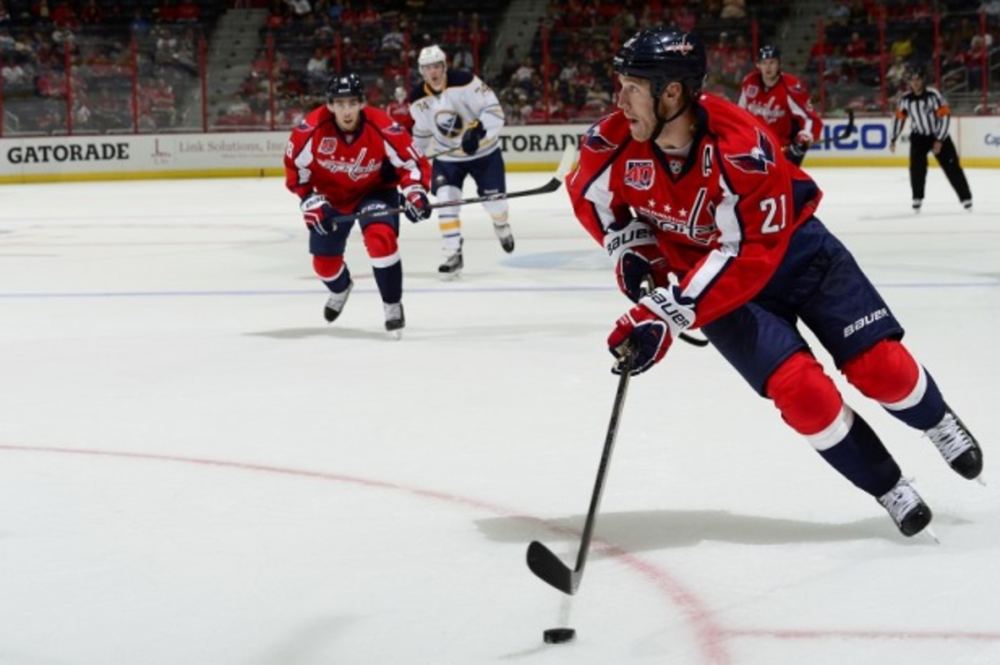Marketing is a lot like sports. There are victories and defeats, underdogs and front-runners, training and strategies. But unlike in sports, marketing doesn’t have an offseason.
Take Monumental Sports & Entertainment (MSE)—owner of the hockey team the Washington Capitals and the basketball team the Washington Wizards—for instance. Not surprisingly, there’s more organic fan engagement during the teams’ seasons, says Mike Hutchinson, senior director of digital media for MSE. Although, factors like game performance can weigh heavily on fans’ level of engagement—or at least whether the sentiment around their engagement is positive.
“Winning makes everything easier,” he says. “[But] at the end of the day, it really is having a strong strategy, speaking to fans in our authentic voice, providing compelling content, [and] forging those feedback loops with the fans so that you’re really able to amplify that success.”
Despite there always being heightened buzz during games, MSE strives to generate engagement during the offseason, as well—such as during the drafts and training camps.
“It’s definitely transitioning to always being on,” Hutchinson says.
Content is one way MSE stays connected to its fans when teams are both on and off the court/rink, and its website, the Monumental Network, is the organization’s home for original content. The website includes links to affiliate sites—such as those of radio networks—as well as pages for each team. During the season MSE embeds content that updates depending on when fans visit teams’ pages. For example, if fans visit the site before a game, they might see a pre-game analysis; however, if they visit the site after the game they might see a video of a press conference. Or if a team is on the road, MSE will upload images of the teams on the plane or heading on a bus for practice, Hutchinson explains. During the offseason, MSE still tries to engage fans by posting Rinkside Updates about training.
Still, content production is a team effort, and MSE wanted to find a better way to aggregate all of the content its fans were generating. As a result, the company implemented Social Hubs from influencer engagement platform Zoomph last season.
Here’s how it works: MSE creates a hashtag for each game. The Social Hub will then gather social content—such as Instagram pics, tweets, and tweeted Vine videos—that includes the designated hashtag. MSE then uses the platform’s visualization capabilities to project user engagement—like Twitter polls— on the Monumental Network, as well as within the teams’ Verizon Center arena.
For example, the team used the hashtags #WizBulls and #DCRising during the Wizards’ Eastern Conference quarterfinals series against the Chicago Bulls and became the top trending NBA team during game five. Likewise, the Wizards used the hashtag #WizPacers for its semi-final series against the Indiana Pacers. Results for the two hashtags can be found via the Zoomph infographic below.
The Social Hub also helps MSE identify real-time influencers. For example, the company can enter in keywords to discover which fans are talking about a specific game or topic, explains Amir Zonozi, Zoomph’s chief strategy officer. Zoomph also uses ZPoints—a tool that ranks how influential a post is based on engagement—to identify the team’s most powerful influencers, Zonozi says.
As the infographic below shows, sports TV program SportsCenter and CNN anchor Wolf Blitzer were the Wizards’ most impactful influencers during the 2014 playoffs.
MSE is also experimenting with a new form of visualization: Zoomph’s Social Collage. The Social Collage, according to Hutchinson, shows an assemblage of social text and images posted by fans in one central location. MSE plans on displaying these collages on its boards outside of the arena this season, he says. Posting social content on the site and outside of the arena creates an immersive experience for old and new fans, Hutchinson says, whether they’re at home, at the game, or outside of the stadium.
“[We’re] really trying to showcase, in unique ways, that we do listen to our fans [and] that their content and sentiment is important to us,” Hutchinson says. “By engaging with them and broadcasting this content and everything that we’re doing across multiple channels, inside and outside of the building, it will draw in more fans, as well.”
Of course, fans can’t consume MSE’s content if they can’t find it. So the company relies on email and social to drive fans to the Monumental Network and engagement. However, Hutchinson says that different segments are attracted to different platforms. For example, he says that the company’s Facebook audience tends to skew 30 or older and that hockey fans are much more engaged on the channel compared to basketball fans. Contrarily, Snapchat tends to attract a younger audience—fans 13 to 20 years old—and is appealing to both hockey and basketball enthusiasts.
With the help of Zoomph, the Wizards have experienced a 240% year-over-year increase in Facebook followers, a 64% year-over-year increase in Twitter followers, and a 167% year-over-year increase in Instagram followers.
In terms of future developments, MSE intends to roll out beacons this season. Through these proximity-based messages, the company will be able to provide fans with welcome notifications, seat upgrades, and sponsor activations, Hutchinson says.
However, just like in sports, new players are always entering the scene. And learning how to keep up with these rookies can be a challenge. Therefore, it’s important for all marketers to live by the words of the great hockey legend Wayne Gretzky: “Skate to where the puck is going to be, not where it’s been.”
Photo Credit: Monumental Sports & Entertainment







